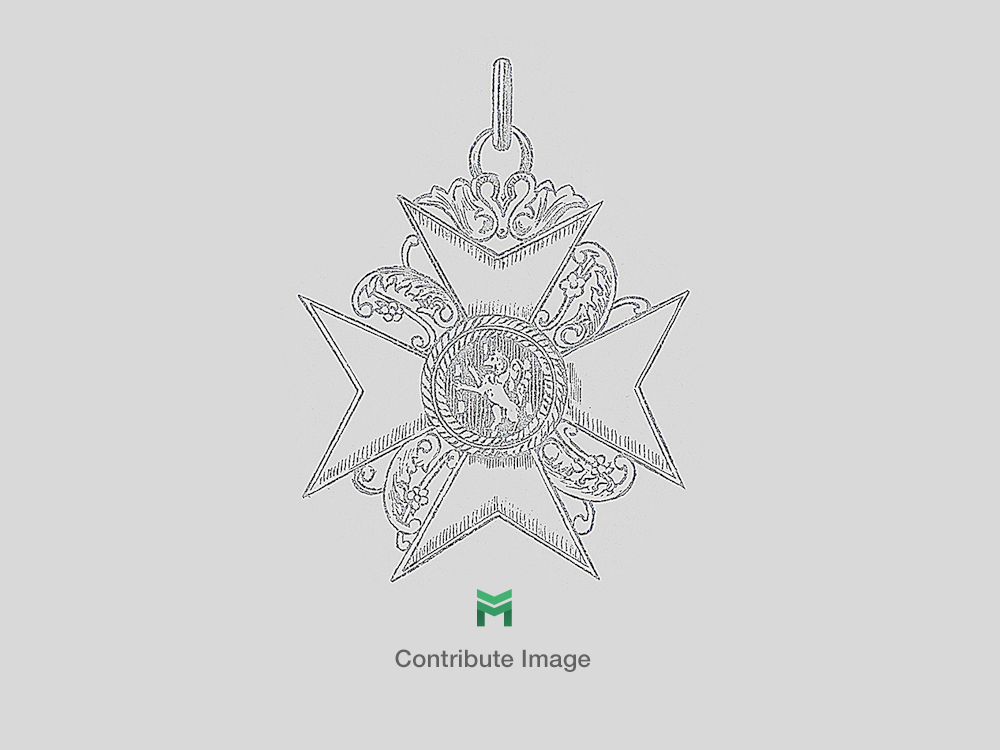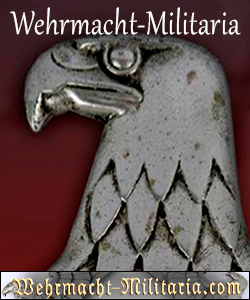German Army Propaganda Officer's Piped Field Tunic
CATEGORY: Version
SKU: 20.GOR.02.01.01.02.02.02.014.000
Estimated market value:

Estimated market value:
The Field Tunic was introduced on April 1, 1933 and became one of the most recognisable embodiments of German military fashion during the 1930s and 1940s. It is also commonly known as the Field Blouse or the Service Tunic. It is a single breasted jacket that was worn by all ranks in the German Heer, with differences in quality between the ranks and slight modifications over the years.
The tunic’s colour was designated “feldgrau”, field-grey, even though it has a distinct green shade. Gradual changes over the years eventually led to a darker, olive-brownish colour. Initially, the tunic was made of wool. However, with the outbreak of the war, material shortages meant a gradual deterioration of quality occured. As the war went on, the percentage of plant fibres mixed in kept increasing.
The individual changes accumulated to several distinct models, known as the M(odel) 33, M36, M43, and M44. However, these are terms given to the tunics by collectors long after the war, and have no official period character.
The initial tunic of 1933 has a front closure with five buttons. There are four box-pleated buttoned patch pockets with scalloped flaps, two on the chest and two on the hips. There is also a buttoned inside pocket on the right front. The fall-down collar was initially made from basic cloth, but this changed to badge cloth in December of 1934. The sleeves have no cuff turn backs. The tunic has belt hook eyelet holes in the front and back on both sides of the waist to attach removable metal belt hooks, which are used to secure the belt.
A few smaller changes were made between 1935 and 1936, with the most recognisable being the change of the collar colour to blue-green. Additionally, the same colour was now used for the cloth backing of all insignia used on the uniform. This was done due to an order dated to September of 1935. This model of the Tunic is known as M36.
Changes that began to affect the tunic during the war years and culminated in the M43 version already began in 1940. That year, the colour of the collar went back to the basic field-grey of the tunic. In May of 1941, the tunic was changed to include a six button front closure. In 1942, the pleats were removed from the pockets, and in 1943, straight pocket flaps were introduced. These changes were all made due to practical and economical reasons. Using fewer production steps saved time and material.
Alterations of older uniforms to have them in keeping with newer regulations were common. Private alterations of uniforms, sometimes against regulations, were also done, often just to make the uniform more fashionable. Because of this, few uniforms will actually conform to the ideal description of any tunic model.
In an effort to standardise and modernise the Field Tunic, a completely new and overhauled design was introduced on September 25, 1944. The new tunic is considerably shorter, in keeping with the fashion of the time, and lacks the jacket skirt. It only has two breast pockets, both of which have no pleats, and straight pocket flaps. The hip pockets disappeared, since there was no room for them anymore on the shortened tunic. However, the tunic has two inside buttoned breast pockets, closed with a button. The sleeves have two button holes and one button for two degrees of tightening. It also has metal belt hooks to secure the belt. The collar was usually worn open, contrary to the earlier tunics.
NCOs (non-commissioned officers) wore tunics identical to those worn by EMs (enlisted men). The only difference was in the tunic’s insignia. For more information on these, see the insignia subfolders. The only difference that was part of the tunic is the aluminum Tresse (braiding) along the edge of the collar.
Tunics worn by officers underwent fewer changes and, from the mid-30s on, basically remained the same. They are of better, tighter fit than those of NCOs and EMs. Officer tunics’ sleeves have deep turn-back cuffs. They also have a white buttoned-in collar. Generals wore the same tunic as officers, but with gilt buttons.
Apart from the regular officer tunic, there was also a piped officer’s field tunic (Offiziersdienstrock mit Vorstößen). It is a mix of the Field Tunic and the Dress Tunic, with branch colour piping down the front overlap of the coat, down the collar’s front edge and around its lower edge, and around the upper edge of the cuffs. However, it lacks the Dress Tunic’s cuffs and cuff Litzen (braids). This version was introduced on July 12, 1937.
Soldiers stationed in northern Africa, and later also in southern Europe, wore a Tropical tunic that was made of lightweight canvas or cotton drill. The design is the same as that of the regular tunic. It ranges in colour from light brown to olive-green to khaki to sand/tan-coloured. Two models exist, one with pleats on the pockets, one without. Generals and officers would normally only wear the pleated version. The Tresse of the NCOs is made of light brown cotton or artificial silk.
In central and northern Europe, soldiers wore a reed-green denim (“Drillich”) tunic during the summer. It is also known as the herringbone twill blouse. Once more, the design is the same as that of the regular tunic, but the material is light canvas or cotton. Similar to the Tropical tunic, the denim tunic comes in a model with pleated pockets, as well as one without pleats. Generals and officers would normally only wear the pleated version.
Branch colours on German Heer headgear was as follows:
Black was worn by Engineer units.
Black/White was worn by Panzer Engineers.
Copper Brown was worn by Motorcycle personnel.
Light Brown was worn by Signals units until 1936, and by Construction troops.
Carmine was worn by the Führer Staff, General Staff Officers, Staff Officers of the Supreme Command of the Army, and all Veterinary branches.
Bordeaux Red was worn by Smoke & Chemical personnel.
Wine Red was worn by Judicial officials.
Bright Red was worn by Generals, Artillery units, and Ordnance Officers (until 1944).
Rose or Pink was worn by all Armored units (including Panzer troops, and Schützen Brigade Staff).
Orange was worn by Recruiting personnel, Ordnance troops, Ordnance Officers (since 1944), and Field Gendarmerie units.
Bright yellow was worn by Cavalry units, and Light Division Staff.
Lemon yellow was worn by Signal units.
White was worn by Infantry units.
Light Grey was worn by Propaganda personnel.
Grey-Blue was worn by Sonderführer (Specialist Officers).
Violet was worn by Chaplains and Field Bishops.
Cornflower Blue was worn by Medical units, and Supply units.
Bright Blue was worn by Transport troops.
Bright Green was worn by Jäger and Mountain units.
Grass Green was worn by Panzer Grenadier units (Armored Infantry).
Dark Green was worn by Administrative personnel.

Comments
Sign in to comment and reply.


Scroll Top